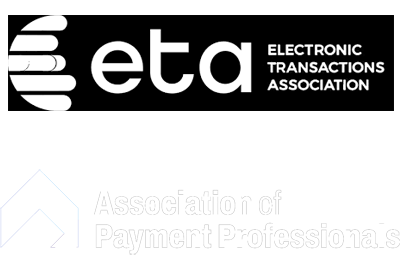08 Mar

Many retailers feel that the concept of Interchange could be more challenging. Interchange is also considered difficult because of its impact on the fees that merchants pay to ensure fees paid using credit and debit cards are processed. The term “interchange” is quite popular in business circles, but not many people know what it means. In addition to Interchange, card companies like MasterCard, Visa, and Discover focus on other fees to cover payment networks and systems maintenance costs.
Please keep reading to learn more about Interchange and its importance in business.
What is Interchange?
Interchange fees are transaction fees that the retailer’s bank account must pay on all occasions that a customer uses a credit/debit card to make purchases. Interchange fees are paid to the card-issuing bank as cover for fraud, handling costs, and bad debt costs. Additionally, the interchange fees also cater to the risks involved in approving the payment hence their importance in the business sector.
For instance, when a client (cardholder) makes a purchase with a credit card, such as a $150 electric gadget, the bank that issued the credit card (the issuing bank) funds $150 to the electric store before they collect that money from the client. Therefore, Interchange accounts for the fees needed to cater to card-based payments regardless of the retailer’s products and services.
Why is Interchange Important?
Interchange is vital in business as it helps improve the payment system. Interchange fees earned by card-issuing institutions provide a financial incentive to promote and issue more cards to their clients. In addition, Interchange helps banks by covering the risk associated with issuing cards to their customers. In any case, adding more cardholders to the system increases the benefits that retailers experience from financial technology. More people with credit and debit cards means that retailers can get more clients, thus promoting their growth.
Interchange is also essential in the expansion of the financial sector. This is mainly because more retailers will be willing to seek the assistance of banks through tailored interchange solutions unique to certain types of businesses. For instance, retailers that deal with low-cost transactions receive a lower transaction fee so that it is not too costly for merchants to accept card-based payments for these low-price goods. The card associations attempt to maintain a delicate interchange equilibrium. If Interchange rises too high, merchants will not accept cards; if Interchange falls too low, then banks will be hesitant to issue cards as they will not have money to cater to the maintenance of the system that will be highly saturated.
How Interchange Fees are Calculated
The interchange system is hugely complex because it consists of different variables. For a simple understanding of the interchange fee, credit card companies present a flat rate plus a percentage of the sales total (including taxes) to make up the interchange fee. In America, retailers spend billions of dollars annually to cater to these fees, with the fee averaging about 2% of the purchase price of a product.
Factors Affecting Interchange
- Business size and industry: Rates fluctuate based on the type of business industry a firm is operating in. For instance, retail and wholesale stores pay more than gas stations. Additionally, large stores or multinational organizations often have lower interchange rates because they have enough influence to assist them in negotiations with banks.
- Transaction type: POS (point-of-sale) transactions pose lower risks than CNP (card-not-present) transactions. This is because the chip can be scanned, a signature taken, or a PIN entered when using POS. Therefore, CNP transactions are charged a higher interchange rate because of the risks they pose.
- Card type: Debit cards have lower rates of Interchange than credit cards because of their low risk. Each credit card company charges a different rate based on its calculations.
How Often do Interchange Rates Fluctuate?
Since the banking sector is highly competitive, card-issuing institutions regularly update their interchange programs. These updates help them improve their services and activities, thus increasing the issuance and acceptance of cards. They add new interchange programs and change rates and fees per their needs to improve their services. Changes are, therefore, common throughout the years as more people continue getting cards and businesses seek interchange programs. Financial institutions must constantly streamline their services, which means regular changes in operations and fees.
How Can Merchants Lower Interchange Costs?
Merchants can adhere to the best practices for card acceptance to become eligible for their firms’ lowest possible interchange rates. Some of the rules and regulations that promote the firm’s eligibility for better deals when it comes to the interchange program include;
- Swiping the card whenever the card is present.
- Verify the cardholder’s address using the Address Verification Service when the gadget has issues warranting manual entry of transactions.
- Settling your terminal or point-of-sale software regularly to avoid downgrades and higher interchange rates.
- Making sure to get valid authorization for each transaction.
- Entering tip adjustments before the batch is settled, especially for restaurants.
- Entering the check-in/check-out dates and folio numbers for hotel merchants.
- Inputting the invoice number when prompted.
- Inputting the tax amount when prompted.
Any firm that allows clients to purchase products or services using credit or debit cards must pay interchange fees. Although no retailer is enthusiastic about coughing up more money from their account, accepting payment with credit or debit cards creates many more advantages than disadvantages of having to pay interchange fees. Accordingly, interchange fees should encourage retailers to accept payment using credit debit cards as they are bound to widen their market by offering a variety of payment strategies to clients. Furthermore, since the firms pay interchange fees, they get the support they need from financial institutions, which can help them develop their businesses.
Suppose you are interested in doing business and are willing to give clients the option to pay with debit or credit cards. In that case, you should follow the steps above to ensure you develop your business and are in a position to negotiate the best terms with your bank when it comes to interchange fees.






